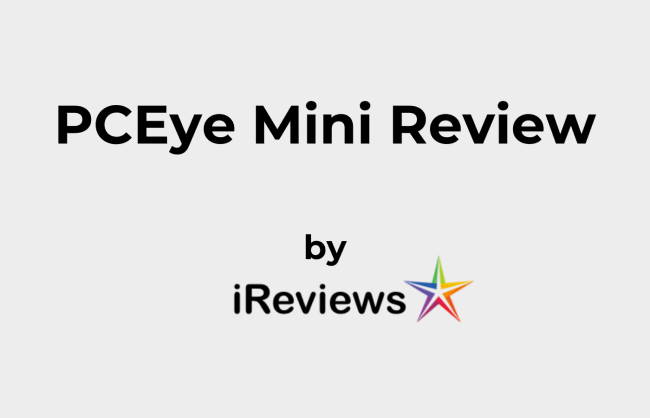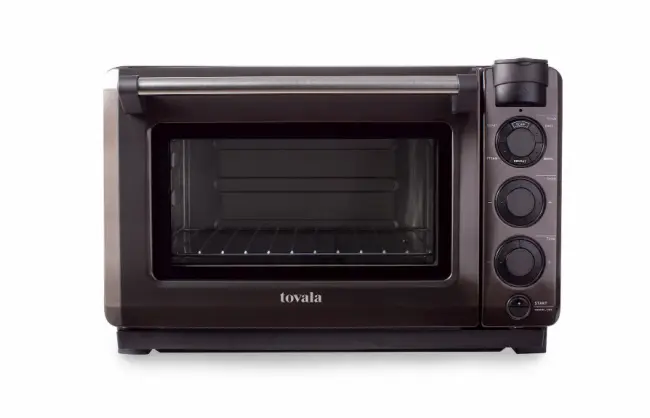PCEye Mini

As the world gets deeper into the age of technology the need for most people to have a computer that works for them has turned into a near necessity. For some people though, I know some problems make using a typical setup difficult.
That’s where modern devices to aid people to use computers how best can come in. One such example is the PCEye Mini.
Design
The Tobii Dynavox PCEye Mini is designed to assist individuals with physical and cognitive disabilities to live more fulfilled lives. It is an eye-tracking device that allows users to operate their computers without a mouse or a keyboard. The hands-free eye tracker uses gaze interaction technology to surf the web, post on social media sites, communicate with others via Skype, and download spreadsheets.
The claims of this device are big ones. If working properly, the device can open up a door of possibilities for people with disabilities to fluidly use their computer in ways other aid products wouldn’t be able to simulate.
Devices like this are well known for being fickle. I wouldn’t put the PCEye Mini down in this regard, though. All signs point to it being a capable machine that uses a wealth of modern technology to ensure that it is always functioning at top form.
Technology
The technology behind the PCEye Mini is what makes the device. New tech that has gone into it is done to ensure it works in ways that past products would have never been able to. This is what I think gives this tracker the edge it needs to function to the fullest.
The PCEye Mini uses Tobii’s proprietary IS4 eye tracking platform to seamlessly navigate the web in the most ergonomically sound way possible. The allowance of fluid motion through the web is something I know I take for granted and giving more people access to this ability is a goal worth striving for.
Then there is the gaze technology which gives users access to their computer without compromising one’s neck or shoulders. This is a small feature, but one I find is important to think about. Spending a long time at a computer tends to have a negative impact on a person’s neck and shoulders, and anything that alleviates that is one less long-term stress on the body.
The PCEye Mini is also capable of attaching or detaching to any computer from newer models to older bulkier ones. This is done with the simple magnetic mounting bracket that comes with the device and makes the PCEye mini highly portable.
One of the most important pieces of technology added to the PCEye I’ve been able to find is the Tobii EyeChip. The claim is that this is the world’s first eye-trading ASIC circuit and that it doesn’t need your computer’s processor to operate its powerful gaze technology.
This makes the PCEye Mini a self-sustaining device that runs itself no matter the computer it’s used with. This means that, unlike most computer accessories, the PCEye Mini does not slow down your computer or drain its power.
Who is it for?
From artistic expression to controlling smart devices, the PCEye Mini reestablishes independence for those who otherwise wouldn’t be able to use their computer as fluidly. Whether you want to control your Philips Hue lights, telephone, smart TV, Nest thermostat, or Sonos speakers, the PCEye tracking technology is capable of operating IoT devices in a blink of an eye.
The company claims that this is a device ideal for those inflicted with ALS or Cerebral Palsy. They say it’s because the PCEye Mini has an intuitive track box that allows them to move their head without losing accuracy or interrupting the eye-tracking session. This means people should be able to sit or lie down comfortably while maintaining eye-tracking performance.
According to Tobii’s website, “The PCEye Mini, with the zoom functionality of gaze selection, allows you to hit the smallest targets on the screen with pixel precision.” Whether your ambition is to return to work or simply interact with family members using social media networks, gaze interaction technology is an assisted communication platform designed to empower its users.
How it Works
To better understand how eye tracking, I want to list out the steps that go into how the device works.
First, the eye tracker sends out near-infrared light. When this happens the light is reflected in our eyes and the eye tracker’s cameras pull up those reflections. Then this data is put through filtering and calculations and finally allows the eye tracker knows where you are looking.
After a comprehensive calibration where the user must follow a point moving across the screen, PCEye Mini becomes a powerful navigational platform. Gaze technology allows users to click by blinking, click via focusing their eyes on a specific area, and click the screen by gazing where they want to click and then pressing a switch.
This offers a range of movement on a PC without ever needing to click a mouse. I think the idea behind the product alone is a wonderful one, and what it is capable of could change the landscape of mouseless computers.
The PCEye Mini differentiates itself with its extremely accurate 3D modeling of the human eye. The platform tries to understand each person’s unique physical eye shape and in turn, can integrate its technology for seamless navigation.
All this effort makes for a product that could be highly functional while being focused on an individual’s needs. No need to worry about it only working for one specific person when it can attempt to focus itself on an individual and their eyes.
Pros And Cons
With everything I’ve talked about so far, I think it’s a good idea to line up the pros and the cons that the PCEye Mini offers. I want to allow the most informed choices possible to be made, so I’ll be giving what I think are the biggest things for and against it.
Pros
- Ergonomic Computer Access
- Portable Computer Access
- Independent Processing
- Scalable Flexibility
- Large Track box
Cons
- Price
- Initial Set-Up
Final Thoughts
There is a lot of good I feel the PCEye Mini can offer the world. When working at peak functionality as intended everything about it offers people who cannot use a mouse a better way to use the basic features of their computer. It won’t be a solution for every difficulty a person might have with using a computer, but it can be a massive help.
Overall there is little I see wrong with how the PCEye Mini could turn out in the long run. As long as it’s focused on and updated over time it could turn out into an industry standard. The future seems bright for this branch of technology I feel.
- Ergonomic Computer Access
- Portable Computer Access
- Independant Processing
- Scalable Flexibility
- Largest Trackbox
- Price
- Initial Set-Up



